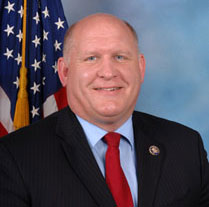WASHINGTON, D.C. – U.S. Rep. Glenn ‘GT’ Thompson (PA-5), chairman of the House Agriculture Committee’s Subcommittee on Conservation, Energy and Forestry, held a public hearing to review the impact of the Endangered Species Act (ESA) and related litigation on the U.S. Forest Service and National Forest System management.
The ESA was signed into law in 1973 in order to “preserve, protect, and recover key domestic species.” Since its enactment, more than 1,500 domestic species have been classified as either threatened or endangered, with only 28 of those species having been delisted as of September of 2012. The Forest Service must comply with ESA before engaging in any type of management activity designed to ensure forest health.
However, the ESA contains a citizen lawsuit provision, which allows private citizens to sue federal agencies and private landowners for allegedly failing to fully comply with the Act. A recent study in the Journal of Forestry examined 1,125 management cases filed against the Forest Service in federal court between 1989 and 2008. Though the costs borne by taxpayers responding to these lawsuits is likely significant, federal agencies do not track these costs, nor are any of these costs recouped, including cases where the federal agency prevails.
The subcommittee heard from witnesses representing the Forest Service and private industries, including Jim Peña, associate deputy chief, U.S. Forest Service, and Alva J. “Joe” Hopkins III, president, Forest Landowners Association. Testimonies focused on the direct and indirect costs associated with the lawsuits, including the financial impact on the Forest Service’s budgetary resources.
“Direct and indirect litigation costs may result from judicial orders requiring payment of attorney fees and costs to a successful litigant,” stated Peña. “The agency also incurs costs in defending litigation, such as redirecting staff from other priority work to prepare administrative records and review legal briefs. In addition, every lawsuit filed requires the federal government to pay for the Department of Justice lawyers, departmental counsel, and the federal court system necessary to address the case.”
A report released in 2012 by the non-partisan Government Accountability Office (GAO) found that the Forest Service does not keep accurate, aggregated information on such attorney claims or fees that have been paid out to litigants. Often these recipients include special interest organizations.
“The cost to a private landowner of defending against such a lawsuit, let alone also facing the litigation over the other sides’ costs and fees is daunting,” stated Hopkins. “We remain greatly concerned that the draconian, one-size-fits-all approach of the ESA has resulted in it being used primarily as a powerful tool in the hands of those who would halt land management activities, while the actual needs of species, including humans, who inhabit the land have become secondary.”
“This is not the first time we have received testimony with regard to frivolous lawsuits that have delayed or ultimately prevented the Forest Service and private industries from implementing timely and effective management decisions,” stated Thompson. “These abusive activities are a significant threat to the health of forests and pose an equal threat to the economic well-being of our local communities.”
Thompson also serves on the House Natural Resources Committee’s Endangered Species Act Congressional Working Group, which is currently identifying policy reforms to the ESA, before moving forward with a rewrite of the law in the coming year.
“The hearing provided us with a more detailed understanding of the negative economic effects this litigation has upon the Forest Service and private foresters, and also the species we are aiming to protect,” Thompson said. “This input will be beneficial as we consider broader reforms to improve and strengthen the ESA.”
Additional information on the hearing can be found here.



